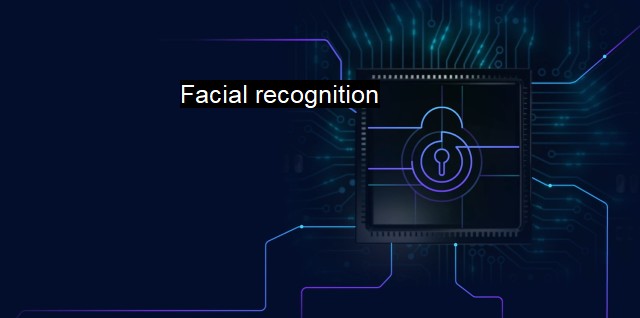What is Facial recognition?
The Evolution of Facial Recognition Technology in the Cybersecurity Industry: Advancements in Patterns, Algorithms and Accuracy
Facial recognition is a rapidly advancing technology that uses biometrics to identify individuals. This technology uses an individual's unique features for identification or authentication purposes, by comparing captured imagery with negative or positive datasets. With the remarkable strides in artificial intelligence and machine learning, facial recognition is now able to deliver swift and incredibly accurate results, making it crucial to cybersecurity practices worldwide.When discussing facial recognition in the environment of cybersecurity, it is often linking to a more extensive safety and protection structure. By encoding sensitive information and needs on someone's face, specifically distinctive facial features, the probability of abductions remarkably drops. The technology decides an individual impostor's credibility by verifying the captured image's distinctive facial features against the already stored facial features in a database.
Advancements in this technology can further deter cybercriminals who focus on identity theft and online fraud. Unlike passcodes or tangible identity cards that can be stolen or manipulated, facial features are markedly challenging to falsify, thereby providing an additional layer of security.
State-of-the-art 3D sensors and infrared cameras that contribute to the facial recognition technology's aptitude have created opportunities for introducing this mechanism in modern antiviruses. Antivirus software companies worldwide now aim to safeguard the computers by ensuring only the certified user can access it, thereby countering potential security threats.
One notable application of facial recognition in antivirus software is in access management, where the system allows or denies access based on identity verification. Given that a high percentage of cybersecurity incidents result from weak or stolen access credentials, these advancements in biometrics can significantly enhance system protection.
In multi-factor authentication procedures, employing facial recognition technology provides an extra layer of defence to safeguard sensitive data. Due to the kinetics involved in micro muscular movements on a face that results in unique expressions, it is challenging to circumnavigate facial recognition technology with static images.
Imperfections exist, and, granted, some improvements are still needed within this essential growing domain. Facial recognition technologies have been exposed to risks including racial and gender bias, inaccuracies in ageing procedures, reliance on high-quality input images and privacy issues concerning unnecessary data collection and storage.
Given these risks, comprehensive legal frameworks shifted on this technology are an utmost vital need. Ethical guidelines and specific implementation limitations should be taken into account in facial recognition technology, encapsulating restrictions on data storage and dissemination. There must be a balance between heightening the cybersecurity technique and valuing the privacy and data rights of individuals.
The improvement of such technologies' precision is another critical issue. Elevating the systems to eliminate inherent bias in the technology and enhancing accuracy rates should be among the top priorities.
Once combined with other measures, like artificial intelligence, machine learning, and biometrics, facial recognition technology can cryptographically bind an individual's identity with devices, applications, or platforms. integrating facial recognition with applications that include pharmacy prescriptions, bank applications, and food delivery applications may improve consumer safety by adding extra protection against identity theft.
Facial recognition's capability and the vast extent of its applications demonstrate that it can contribute meaningfully to enhancing safety, both in terms of cybersecurity and antivirus capabilities. It establishes a more concrete physical underpinning of an individual's identity, ushering in a new era of safety where one's unique facial features contribute to security against cyber threats. The technology’s potential to secure systems against data breaches, unauthorized access, and cyber theft, bundled with stringent legal restrictions to sustain human rights and aided with advancements in precision, could manifest an indomitable digital defence mechanism. Practicalcontinued improvements are a journey—with every step contributing to a safer cyber world.

Facial recognition FAQs
What is facial recognition?
Facial recognition is a technology that uses algorithms to analyze and identify people's faces. It is used for security purposes like unlocking a phone or identifying individuals in a large crowd.How does facial recognition work in cybersecurity?
Facial recognition can be used as an added security measure in cybersecurity. It can be used to authenticate users instead of traditional passwords or PINs. The technology can also be used to monitor access to secure areas or data centers.What are the potential risks of using facial recognition in cybersecurity?
Facial recognition technology has raised privacy concerns as it involves capturing and storing individuals' biometric data. There is also a risk that the system can be hacked or manipulated, allowing unauthorized access to sensitive information.What are the best practices for using facial recognition in cybersecurity?
To minimize the risks associated with facial recognition technology, it is important to implement measures like encryption and data protection to keep the biometric data secure. It is also important to ensure that the technology is used in compliance with regulation and ethical standards.| | A | | | B | | | C | | | D | | | E | | | F | | | G | | | H | | | I | | | J | | | K | | | L | | | M | |
| | N | | | O | | | P | | | Q | | | R | | | S | | | T | | | U | | | V | | | W | | | X | | | Y | | | Z | |
| | 1 | | | 2 | | | 3 | | | 4 | | | 7 | | | 8 | | |||||||